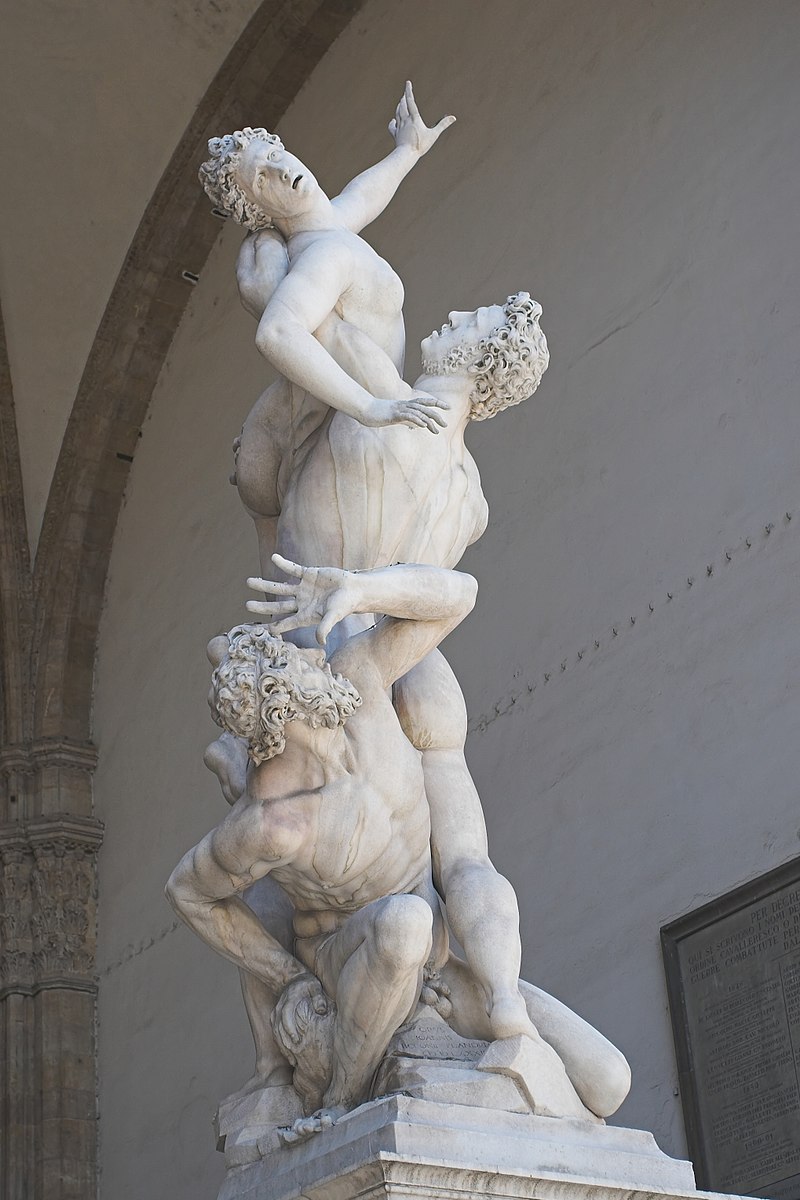
Rape of the Sabine Women
Citation: Giambologna. Rape of the Sabine Women. 1582. http://library.artstor.org/asset/SCALA_ARCHIVES_1039928770. Web. 5 Dec 2017.
Description of Image: This sculpture appears to be made of marble. The main subject of the sculpture is the young woman who looks to be in distress. The sculptor brings out eyes up to her through the use of the two other figures who are looking up at her. The man on the very bottom is very muscular, even more so than the one above him. All thee subjects are expressing vivid emotion, though their facial expressions and the movements of their limbs. The woman is pushing away the young man holding her, appearing to cry out for help. The man crouching in the bottom also appears to be horrified by what he is seeing, using his left hand to cover his eyes and the rest of his body to push away. The young man in the middle stands tall and strong, holding the woman in his tight grip, despite her protest and appears oblivious to the man crouching at his feet.
Quote: “At a given signal, the Roman youths rushed in every direction to seize the unmarried women.” (Livy Book 1)
Similarities: Both the text and sculpture depict the same image: a woman being taken without her will. The woman in the sculpture looks surprised, her mouth agape, as the man ambushes her. She pushes against him to try to get away, but the Roman man persists; he needs a wife to have children to carry on the newly enriched Roman Empire. Both the text and image show the kidnapping of neighboring women but the sculpture has one deviation. The man crouching at the bottom is not per-taking in the kidnapping of the maiden. In fact, he looks at the act in horror. The question of “why?” is raised here: he too, is a man so why isn’t he kidnapping a woman to be his wife as well? My guess is that he is the woman’s father, imploring the Roman youth not to kidnap his daughter.
I think that thought the addition of the father figure, the artist depicted the rape of the Sabine women in a negative light. The artist wanted to show that this was a horrible crime and that the abducted women were violated. The artist follows the description in the text, although the text justifies and somewhat glorifies the kidnapping of the Sabine women. The artist’s sculpture is more emotional and shows the true horror of the kidnappings.
Elene T., Team Mars

